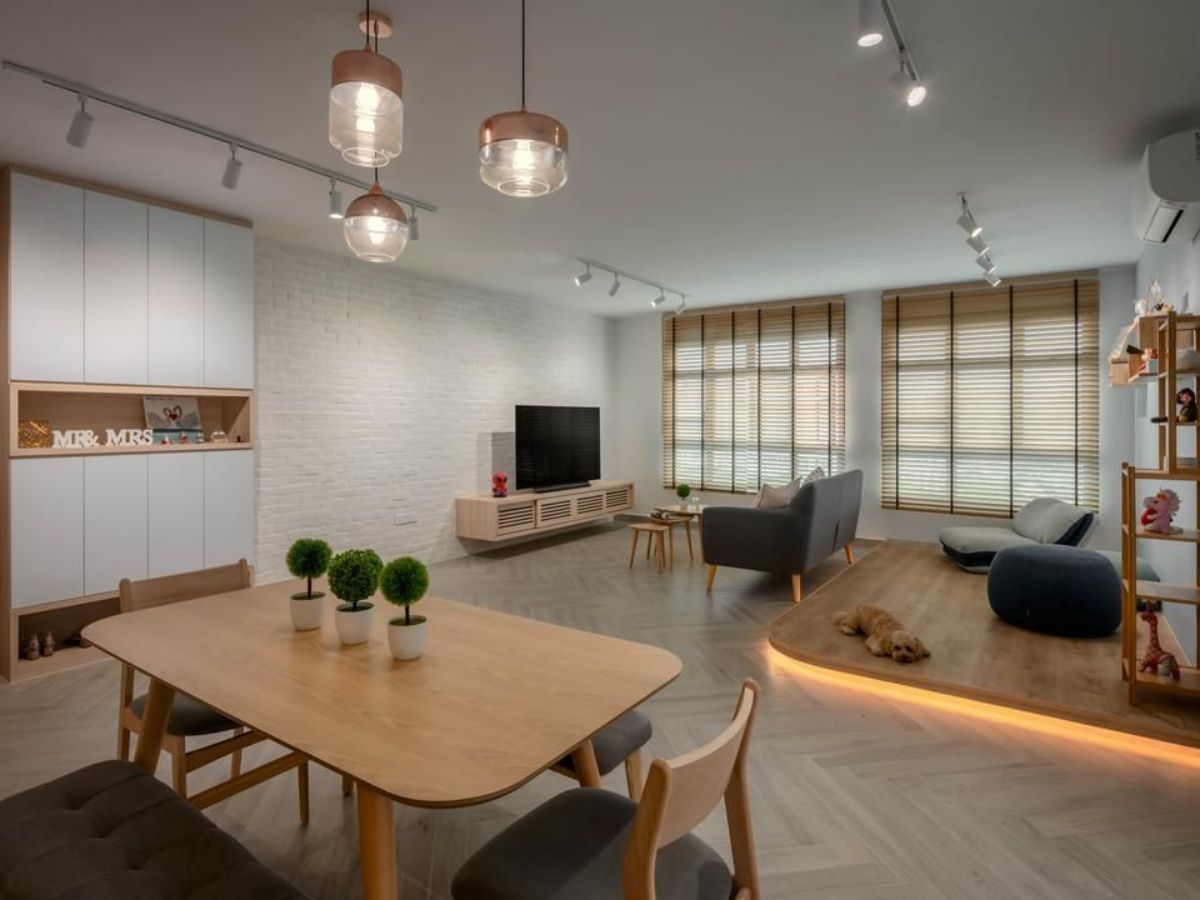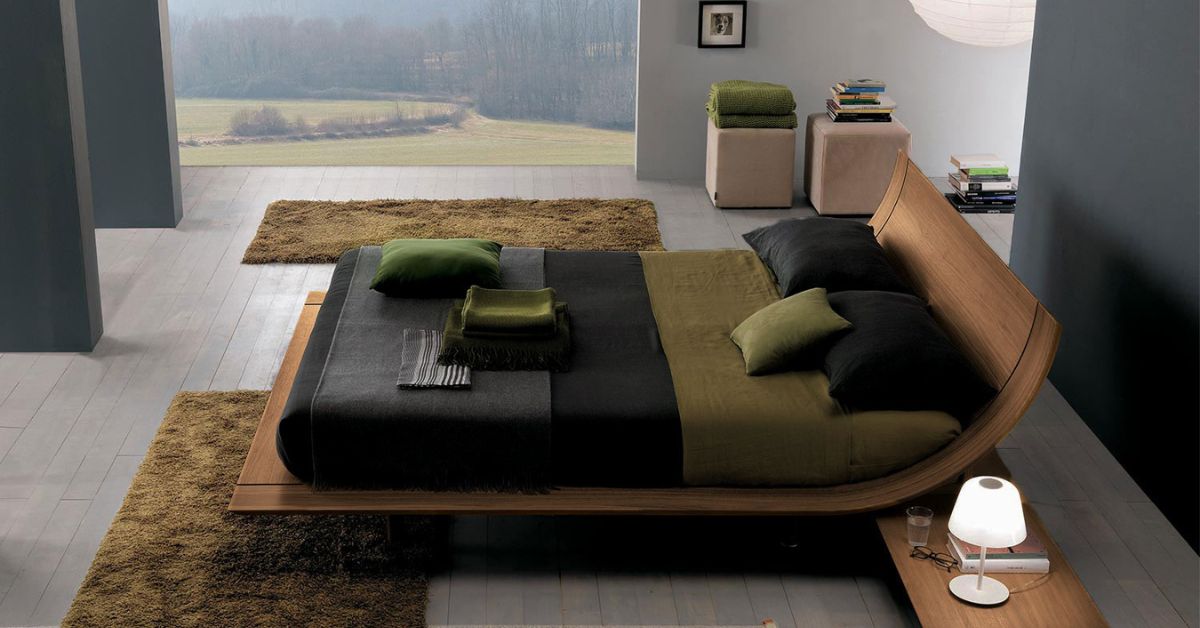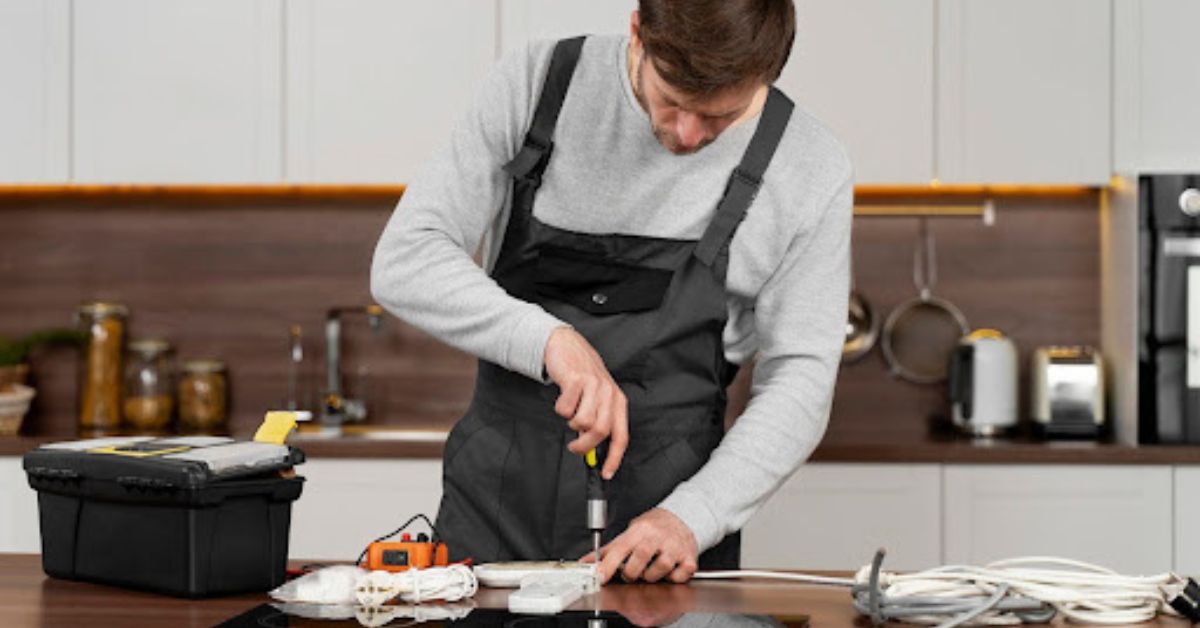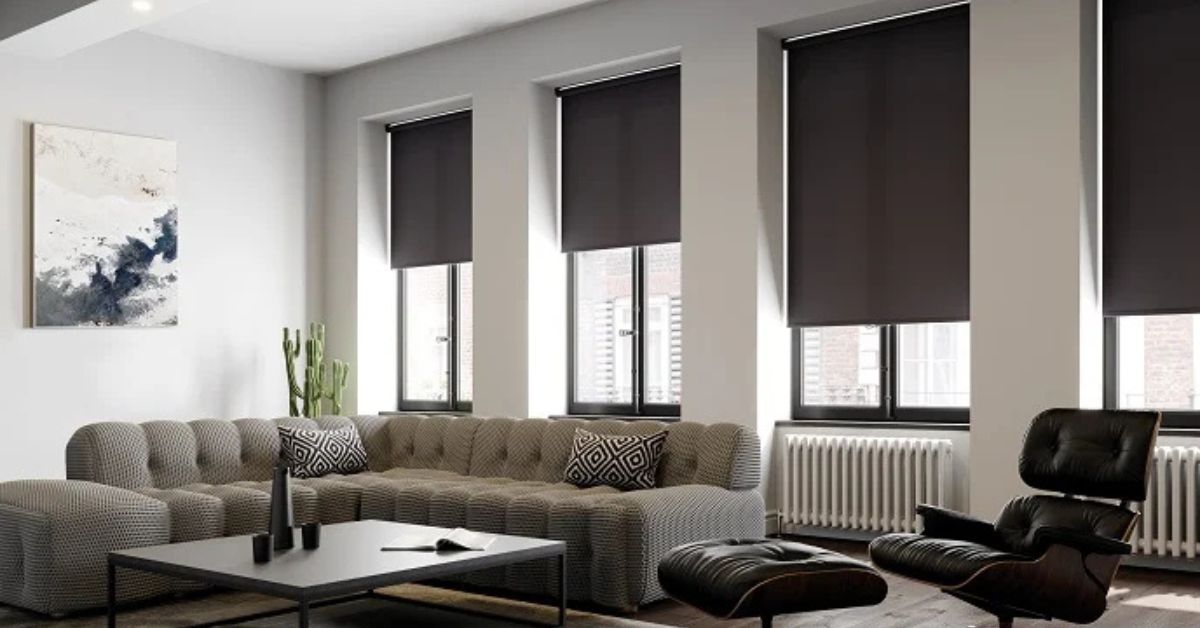HOME IMPROVEMENT
Why Minimal Furniture is Gaining Popularity These Days?

How we dress and live is influenced not just by design ideas and traditions, but also by our values and, most importantly, by the period. When things appear chaotic in the way one lives or in the world surrounding us, minimalist design can have a calming influence on our well-being. However, there are numerous other reasons why minimalism remains a popular trend. Experts have mentioned some of the primary reasons why minimalism is still relevant. Looking for quality, durable and stylish furniture sets for your living or bedrooms then HMO furniture packages are something you should consider before anything else.
Understanding Minimalism
In today’s seemingly chaotic world, the phrase “minimalism” is frequently used as a relaxing cure. But what constitutes the concept of minimalism is it only about eliminating things? Or does it have a broader dimension, encompassing different parts of our life and manufacturing processes such as design and art? Let’s look at minimalism, its historical context, and the fundamental ideals of minimalist design.
Core Concepts Of Minimalist Design
Minimalist design is essentially the art of doing less. It’s about careful reduction as well as focusing on the most important components of the information or design.
- Simplicity: The slogan of the minimalist aesthetic is “less is more”. Composition and colour palettes are simplified to their most basic form, and each piece must have a purpose.
- Functionality: a minimalist aesthetic prioritises functionality above appearances. Every component in a minimalist layout should add to its usability.
- Clarity: Minimalist designs, with fewer components and distractions, may deliver messages fast and clearly, making them appropriate for current communication methods.
- Whitespace: In minimalist architecture, space, or empty spaces, is just as significant as the other parts. It creates balance, emphasises crucial parts, and improves readability.

The Allure Of Functionality:
Minimalist design emphasises utility above all else. This translates into clean lines, spacious floor designs, and uncluttered areas. Every aspect, from furniture arrangement to integrated storage, has a purpose and improves the overall usefulness of the space. Consider it a well-oiled machine, with each component working together effortlessly to achieve a certain goal.
This emphasis on functionality is congruent with modern lifestyles. Our homes are frequently multi-functional, acting as workspaces, entertainment centres, and rest zones. A minimalist approach guarantees that the room may accommodate these diverse needs without becoming cluttered or tight. For example, a minimalist living room might have a collapsible sofa that can be quickly changed for watching movies or conversations with friends.
Ideal For Urban Living
As more people move to cities, apartments become less spacious and more expensive. Compact furnishings that are capable of fitting inside limited areas while yet providing usefulness and comfort are required for urban residences and condos. Space-saving furniture provides this versatility, thus rendering it popular among city inhabitants. Beds featuring built-in storage, versatile sofas, and bookcases that double as room separators are just a few examples of furniture suitable for urban life.
Cultivating Calm:
Why is minimalism so fashionable in a fast-paced world? Our homes are becoming increasingly seen as sanctuaries, where we may escape the incessant stimulation as well as pressure of daily life. The minimalist style of design excels at conveying a sense of calm and tranquillity. Here’s how.
- The minimalist design eliminates visual clutter by minimising items and emphasising clean lines. Consider a room devoid of unnecessary furniture, attractive knick-knacks, and crowded shelves. This produces a sensation of visual peace, allowing mental faculties to relax and unwind.
- Embracing Natural Light: To maximise natural light penetration, minimalist design frequently uses wide windows along with open floor plans. Natural light not merely illuminates the area, but also develops a connection with nature, increasing emotions of psychological well-being and reducing the dependence on lighting that is artificial.
- Materials and Textures: Natural materials such as wood, stone, and concrete are typically used in minimalist designs. These materials provide an overwhelming feeling of warmth and grounding, which contributes to a relaxing atmosphere.
Timelessness
The minimalist design appears to be timeless since it avoids decorative excess and quickly outdated trends. Its simplicity transcends passing trends, adding to its enduring appeal. With a renewed emphasis on sustainability, this aspect of minimalism is becoming increasingly fashionable.
Versatility
Simple architecture has the benefit of adaptability. Because it is not limited only to particular patterns, colours, or patterns that may conflict, it may blend seamlessly into a variety of situations and circumstances, whether it is a piece of furniture or a fashion item.
Final Words:
So why is minimalism so popular? It’s more than simply a clean appearance; it’s an integrated approach to design that prioritises what’s genuinely important. Minimalist environments are designed to accommodate our modern, multifaceted lives by emphasising practicality. The emphasis on spontaneous light and simple lines creates a sense of serenity, a much-needed respite from our hectic lives.
Also, read: Why Estate Agents Are Essential for Selling Your Property?
HOME IMPROVEMENT
Saving Time and Money with Oven, Range & Stove Repair Pro

It was just another weeknight in Manhattan when Melissa realized her oven wasn’t heating properly. With her kids hungry and a half-cooked casserole waiting, she scrambled to find an appliance repair service near me. After a quick online search, she came across Oven, Range & Stove Repair Pro and called 646-980-6968. Within hours, a technician arrived and saved dinner along with her evening.
Like Melissa, many homeowners don’t realize how much time and money they can save by working with the best professional appliance repair service in their area. Let’s explore how Oven, Range & Stove Repair Pro can help you get your kitchen back in shape without the stress or high cost.
Early Repairs Prevent Expensive Replacements
A small issue in your stove, oven, or range can turn into a major breakdown if ignored. A burner that won’t light or an oven that heats unevenly might seem manageable, but over time, these small problems can damage the appliance’s core components.
By hiring a professional appliance repair company like Oven, Range & Stove Repair Pro, you can catch problems early and avoid the cost of a full replacement. Their team of expert appliance repair technicians knows how to detect minor faults before they become serious.
This proactive approach is what makes them one of the best appliance repair service providers in Manhattan.
Fast Service That Keeps Your Routine On Track
Busy schedules don’t allow for long delays, especially when essential appliances stop working. That’s why speedy appliance technicians are essential in today’s world.
With speedy appliance technicians near me dispatched the same day you call, Oven, Range & Stove Repair Pro minimizes downtime. Whether you’re dealing with a broken range or a faulty stovetop, their team works fast without sacrificing quality.
Looking for a local appliance repair team that responds quickly? Call 646-980-6968 and get your repair done right the first time.
Professional Technicians Deliver Long-Term Value
DIY videos and budget repairmen may seem like money-saving options, but poor workmanship often leads to more damage. That’s why investing in professional appliance technicians near me is actually more affordable in the long run.
Oven, Range & Stove Repair Pro provides trained and licensed professional appliance technicians who understand all brands and models. They arrive fully equipped and ready to fix problems the right way.
This dedication to quality makes them a standout appliance repair company among others in Manhattan.
Affordable Appliance Repair That Fits Your Budget
Cost is one of the biggest concerns for homeowners facing appliance issues. Luckily, Oven, Range & Stove Repair Pro is known as an affordable appliance repair company offering top-tier service without breaking the bank.
Their pricing is upfront and fair. As an affordable appliance repair service, they provide accurate estimates, avoid unnecessary upsells, and ensure every dollar is well spent.
So if you’re looking for the best local appliance repair without inflated prices, this is the team to trust.
Specialized Experts for Ovens, Ranges, and Stoves
Not all technicians are qualified to fix cooking appliances. You need a stove repair professional who understands safety, gas lines, electronics, and heating mechanisms.
Oven, Range & Stove Repair Pro employs the best oven repair professionals, range repair professionals, and stove repair professionals near me to ensure that no matter the issue, you get specialized help.
From poor heating and broken knobs to full ignition failure, their affordable range repair professionals are trained to handle it all. If your appliance is misbehaving, don’t wait, call 646-980-6968 for expert assistance.
Local Knowledge Matters in Manhattan
Finding a repair team that knows the area is more valuable than most homeowners realize. When you hire Oven, Range & Stove Repair Pro, you’re choosing a business that understands the common appliance brands, building codes, and customer expectations in Manhattan.
As a local appliance repair expert, they bring a personal touch, fast access, and proven results. They’re not just another business, they’re your neighbors, and they treat your appliances with the same care as their own.
Long-Term Peace of Mind with the Right Partner
Working with the wrong repair company can lead to repeat visits, incomplete fixes, or voided warranties. With Oven, Range & Stove Repair Pro, you’re partnering with a team that guarantees their work and takes responsibility for delivering lasting results.
Their reputation as the best expert appliance repair team in Manhattan is backed by five-star reviews, return customers, and a track record of excellence. They’re not only a service provider, they’re a solution.
Conclusion: Save More with the Right Repair Service
When your kitchen appliances start acting up, it’s tempting to put off repairs or look for the cheapest option. But when you choose Oven, Range & Stove Repair Pro, you’re investing in speed, quality, and long-term savings.
Their commitment to timely service, expert repairs, and affordable pricing makes them the best appliance repair service in Manhattan. Whether it’s a minor glitch or a major issue, don’t wait until it’s too late.
HOME IMPROVEMENT
Rug Cleaning in Singapore: 6 Mistakes That Ruin Your Rugs

Your beautiful rugs add warmth and personality to your home, but they also face unique challenges in Singapore’s tropical climate. Many homeowners make costly mistakes when caring for their rugs, often causing more damage than the original problem they were trying to solve. Understanding these common errors helps you protect your investment and maintain your rugs’ beauty for years to come.
Why Rug Care Matters More in Singapore
Singapore’s consistently high humidity levels create the perfect environment for mould, mildew, and dust mites to thrive in your rugs. With humidity averaging over 80% year-round, your rugs absorb moisture from the air constantly, making them vulnerable to problems that don’t affect rugs in drier climates. Professional rug cleaning in Singapore becomes essential when you consider how quickly these issues can develop in our tropical environment.
1. Over-Wetting Your Rugs During Cleaning
Water seems harmless enough, but using too much water when cleaning your rugs creates serious problems. Excessive moisture seeps deep into the rug fibres and padding, where it can remain trapped for days or even weeks. This trapped moisture becomes a breeding ground for mould and mildew, which can permanently damage your rug and create health hazards for your family. When cleaning spills, use a well-wrung cloth that doesn’t drip water onto your rug.
2. Scrubbing Stains Too Aggressively
When you discover a stain on your expensive rug, your first instinct might be to scrub it vigorously until it disappears. This approach actually drives the stain deeper into the fibres while damaging the delicate rug structure. Hard scrubbing can cause your rug to look worn and frayed, especially around the areas where you’ve been working on stains. Instead, blot stains gently with a clean cloth and appropriate cleaning solution.
3. Using the Wrong Cleaning Products
Different rug materials require specific cleaning approaches, and using the wrong products can cause permanent discolouration or damage. Wool rugs need different care than synthetic materials, and natural fibre rugs react differently to cleaning chemicals than machine-made options. Research cleaning products carefully before applying them to your rug, and always test any new product on a small, hidden area first.
4. Leaving Spills Untreated for Too Long
Singapore’s humid climate means that spills and stains set much faster than they would in drier environments. What might seem minor today can become a permanent stain within 24 hours when combined with our tropical humidity. Food spills, pet accidents, and drink spillages need immediate attention to prevent them from penetrating deep into your rug fibres, where they become nearly impossible to remove completely.
5. Over-Shampooing During Deep Cleaning
Using too much shampoo or failing to rinse thoroughly after cleaning creates residue buildup that attracts more dirt over time. This residue makes your rug look dull and can cause the fibres to break down prematurely. In Singapore’s humid climate, soap residue also provides additional moisture that encourages mould growth and creates musty odours that circulate throughout your home.
6. Relying Only on DIY Cleaning Methods
While regular vacuuming and spot cleaning help maintain your rugs, they cannot address the deep-seated dirt, allergens, and moisture that accumulate in Singapore’s climate. Professional cleaning reaches areas that home cleaning cannot access, removing dust mites, bacteria, and allergens that affect your family’s health. Most homeowners wait until their rugs look visibly dirty, but by then, significant damage may have already occurred.
Professional Solutions for Singapore’s Climate Challenges
When these mistakes feel overwhelming or when your rugs need deeper care than home methods can provide, professional services offer systematic solutions designed for Singapore’s specific challenges. Be Mitey Clean understands the unique requirements of rug cleaning in Singapore and uses specialised equipment that addresses both surface stains and deep-seated moisture issues that develop in our humid climate.
Their multi-step process includes pre-inspection to identify specific cleaning needs, dust mite removal systems that target allergens, and controlled moisture extraction that prevents over-wetting problems. The company’s experience with Singapore’s tropical conditions means they understand how to clean rugs thoroughly while ensuring proper drying to prevent mould and mildew development.
Protecting Your Investment
Your rugs represent significant investments in your home’s comfort and style, and protecting them from these common mistakes ensures they continue serving your family for years to come. Regular professional rug cleaning service in Singapore, combined with proper home maintenance, addresses the unique challenges our climate presents while preserving your rugs’ beauty and extending their lifespan.
Understanding these mistakes helps you make informed decisions about rug care and recognise when professional intervention can save you from costly replacement expenses. Your rugs deserve protection from Singapore’s challenging climate, and avoiding these common errors is the first step toward maintaining their value and appearance.
HOME IMPROVEMENT
Enhancing Your Home with Modern Blinds: Style, Functionality, and Practicality


Why Choose Modern Blinds?
Modern blinds are window treatments designed to combine style and function in both homes and offices. Crafted from materials such as fabric, vinyl, and aluminum, they come in various types, including roller, vertical, and Venetian blinds. These options offer adjustable light control and privacy while complementing a wide range of interior designs. There are many modern blinds for every space which also includes automation features and energy-efficient properties, making them a smart choice for busy lifestyles that value convenience without compromising on style.
These blinds are versatile and available in a variety of colors, materials, and designs. They provide both aesthetic appeal and practical function by controlling light and ensuring privacy in any room. Whether it’s classic wood blinds or sleek roller shades, modern blinds can suit a wide range of interior styles. Their integration with smart home technology adds further convenience, making them an ideal choice for homeowners seeking a blend of elegance and practicality.
Modern Blinds for Kitchens
Modern blinds are especially practical for kitchens, offering both functionality and a touch of style. They ensure privacy while still letting in natural light, creating a bright and welcoming atmosphere. Their low-maintenance nature, many being washable or easy to wipe clean, makes them perfect for areas exposed to spills and splashes. Contemporary designs also elevate kitchen décor, seamlessly merging utility with style.
These blinds enhance both the efficiency of everyday kitchen tasks and the overall design of the space. Whether it’s sheer roller shades that allow light while preserving privacy or bamboo shades that bring warmth, modern blinds can match various kitchen themes. Adjustable slatted designs offer flexible light control, while bold colors or patterns can become standout features in minimalist settings.
Modern Blinds for Bedrooms
In bedrooms, modern blinds offer a combination of comfort, style, and function. They allow for precise control over lighting throughout the day and provide privacy without compromising air circulation. Often easier to clean than traditional curtains, they offer a low-maintenance way to enhance the look and feel of personal spaces.
Modern blinds also support personalization, fitting a wide range of bedroom aesthetics from minimalist to eclectic. Their visual and functional versatility helps set the mood, contributing to a more restful and relaxing atmosphere.
Modern Blinds Beyond Kitchens and Bedrooms
Modern blinds can elevate the look of any room, including living areas and workspaces. With countless options for design, color, and material, they offer both decorative appeal and useful features like light control and privacy. Some models include motorization for easier adjustments, allowing users to fine-tune lighting and ambiance with ease.
In living rooms, blinds enhance comfort and privacy while maintaining visual appeal. In bedrooms, blackout options can block unwanted light, supporting better sleep. Kitchen blinds resist moisture and are easy to clean, while blinds in office spaces can filter natural light to reduce glare on screens. The adaptability of modern blinds makes them a smart solution across different settings.

Choosing the Right Modern Blinds
When choosing modern blinds, several key factors come into play. Start by considering the room’s style and color scheme to ensure a cohesive design. Think about how much light and privacy you need opt for sheer materials for bright spaces or blackout styles for complete darkness. Also, consider how you’d like the blinds to operate manual or motorized systems are available to match your preferences. Accurate measurements are crucial for a seamless fit and optimal performance.
The color and material of the blinds also play a major role in setting the tone of a room. Warm tones add a sense of intimacy, while cooler shades evoke calmness. Materials like wood, metal, or fabric can bring different textures and character. Coordinating the color and material with the existing décor helps create a harmonious or intentionally contrasting look that suits your personal taste.
Maintenance and Care for Modern Blinds
Maintaining modern blinds is simple with the right approach. Regular dusting with a microfiber cloth keeps them looking clean and fresh, while a mild soap-and-water solution works for deeper cleaning. Avoid using harsh chemicals to prevent damage to the material. Check periodically for signs of wear, such as fraying cords or bent slats, to ensure your blinds stay functional and attractive.
Routine inspections and timely repairs help extend the life of your blinds. Addressing small issues early can prevent costly replacements and preserve both their appearance and performance. Taking a proactive approach to maintenance protects your investment and keeps your window treatments in top condition for years to come.
FAQs
What are the benefits of using modern blinds in home décor?
Modern blinds offer both style and functionality. They provide effective light control and privacy, match various interior designs, and often include features like automation and energy efficiency. Their ease of maintenance also makes them ideal for today’s fast-paced lifestyles.
How do I choose the right modern blinds for my space?
Consider the room’s design, color palette, and lighting needs. Blackout blinds are great for privacy and sleep, while sheer options allow natural light. Think about the preferred operating method manual or motorized and always take accurate measurements to ensure a proper fit.
How do I clean and maintain modern blinds?
Dust regularly with a microfiber cloth to prevent dirt buildup. For more thorough cleaning, use a mild soap solution and gently wipe the slats with a damp cloth. Avoid strong chemicals, and routinely check for signs of wear to keep the blinds functioning and looking their best.
-

 TECHNOLOGY1 year ago
TECHNOLOGY1 year agoElevating Game Day Eats: A Guide to Crafting Crowd-Pleasing Sliders
-

 ENTERTAINMENT1 year ago
ENTERTAINMENT1 year agowave_of_happy_: Your Ultimate Guide
-

 FASHION1 year ago
FASHION1 year agoGPMsign Fashion: Redefining Style with Purpose
-

 TECHNOLOGY12 months ago
TECHNOLOGY12 months agoTrader Joe’s Dayforce: Revolutionizing Workforce Management
-

 FOOD1 year ago
FOOD1 year agoAltador Cup Food Court Background: A Culinary Extravaganza Unveiled
-

 SPORTS1 year ago
SPORTS1 year agoScore Chaser Sporting Clays: A Thrilling Pursuit of Precision
-

 HOME IMPROVEMENT9 months ago
HOME IMPROVEMENT9 months agoWhat Kitchen Renovation Companies Offer Beyond Basic Remodeling
-

 NEWS1 year ago
NEWS1 year agoNyl2 Kemono: Unveiling the World
